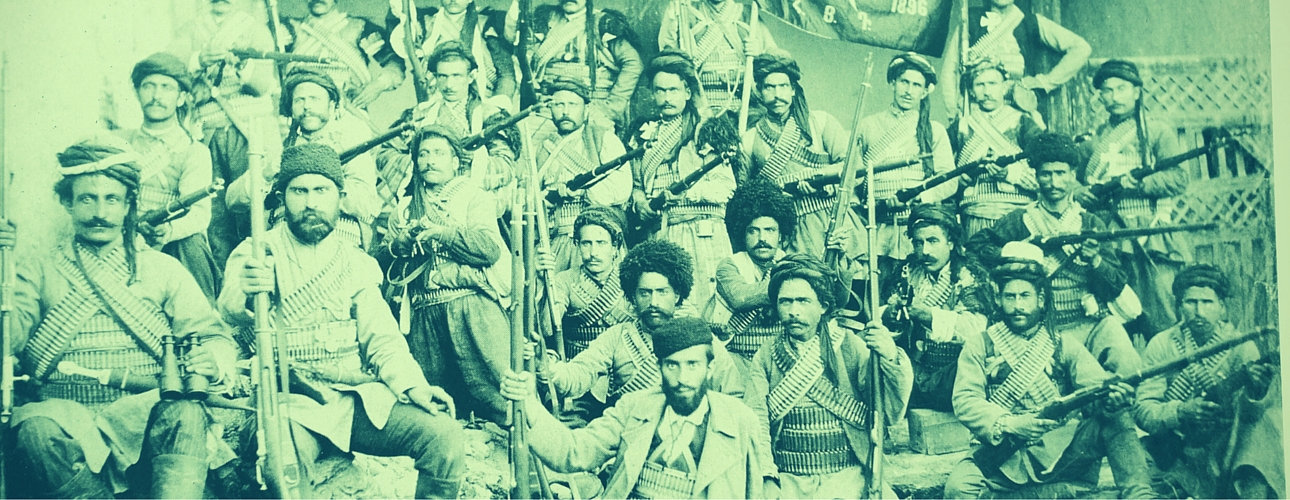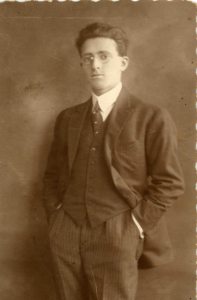
Arshavir Shiragian [1900–1973]

Arshavir Shiragian was born in Constantinople and grew up around ARF members. As a teen, during the Armenian Genocide, Shiragian was entrusted with delivering messages and transporting weapons for the party.
Shiragian was recruited to take part in the ARF’s Operation Nemesis, which sought to punish Turkish officials guilty of organizing and carrying out the Armenian Genocide.
His first target was the traitor Vahe Ishan (Yesayan). According to Shiragian’s memoirs, Ishan was “a traitor who was despised by his countrymen, his relatives, and eventually by his own children” and “helped to draw up the list of prominent Armenians who were arrested and deported in 1915.” Shiragian assassinated Ihsan on March 27, 1920 in Constantinople.
Shiragian was assigned the task of assassinating Sait Halim Pasha (Grand Vizier of the Ottoman Empire from 1913 to 1917), who was in exile in Rome. On December 5, 1921, Shiragian assassinated him in a taxi. Along with Aram Yerganian, Shiragian was then given the task assassinating both Jemal Azmi, governor of Trebizond during the Genocide, and Behaeddin Shakir, a founding member of the Committee of Union and Progress (Ittihad), both of whom were in Berlin.
On April 17, 1922, Shiragian and Yerganian confronted Azmi and Shakir, who were out walking with their families. Shiragian killed Azmi and wounded Shakir. Yerganian then ran after Shakir and shot him dead.
Shiragian eventually married, and he and his wife, Gaiane, moved to New York in 1923, where they had a daughter, Sonia. He was active in public life and the Armenian community in the New York/New Jersey area.
In 1965, Shiragian published his memoirs, Կտակն էր նահատակներուն (It Was the Legacy of the Martyrs). The memoirs were published in English as The Legacy: Memoirs of an Armenian Patriot, in 1976, translated by Sonia Shiragian, and published by the Hairenik Press.
Shiragian died in 1973, in New Jersey. He was 73.
Even after so many years, whenever I recall those days, I live through the terror that spread like a disease through Constantinople during the war. At the beginning, thousands of Armenian young men entered the army, responding to the call. Other families sold whatever they could in order to pay the military bedel (exemption fee). After collecting millions of dollars, the authorities of the Ittihad government ignored the bedel law, gathered the ones who had paid, as well as the ones who had joined the army, and sent them to the war front or organized them into labor battalions. Many of these men died in the filth and disease that plagued the Turkish Army. But many more were murdered by their own Turkish officers. About 120,000 Armenians were massacred after being placed in the so-called labor battalions. Thousands deserted, and thousands of others made their way back to Constantinople, bringing with them horrible stories of systematic murder and torture. So they became fugitives, hiding from the police….
Always expecting the worst, we had come to realize that the Turk could not be trusted. And yet, today, I can admit that very few Armenians, if any, were prepared for the events that started on April 24, 1915. That day, as soon as darkness fell, 250 prominent Armenians— writers, editors, educators, lawyers, Dashnak leaders—were seized in their homes, taken to jail, and eventually sent to Anatolia where they were massacred as a prelude to the slaughter of one and a half million other Armenians. The seizures began around 8 PM as groups of police officers carrying lanterns closed in on the Armenian neighborhoods. Men who had retired for the night were told that they would be brought back within the hour and that there was no need even to change their clothes…. The men were taken at first to local police stations…. They were moved from place to place, deeper and deeper into the labyrinth of Turkish political jails. By the week’s end, they had already been sent into the interior of Turkey….
Within the next few days, many more prominent leaders were arrested. When Krikor Zohrab and Vartges Serengiulian, two Armenian members of the Turkish Parliament, appeared before the Grand Vizier, Premier Sait Halim Pasha, to lodge a formal protest, they were given evasive answers…. They were deported and killed…. Within a few months about 2,500 men, the top leadership of the Armenians, had been taken forever from our midst.
During the same evening, April 24, that our nation was being decapitated, another terrible event took place which has been virtually unrecorded. Thousands of young Armenian provincials who had come to Constantinople to work as laborers—hamals, doorkeepers, messengers—were jailed and eventually deported and killed. These poor young Armenians had left their families behind in their villages. Some of them had walked hundreds of miles to get to the big city. In Constantinople, they willingly did the most menial and hardest of jobs, working a 13-hour day for the equivalent of ten dollars a month. Most of this money was sent back to their wives to buy food for their children, to their parents to buy seeds or a new farm animal…. But they were young and strong and incorruptibly Armenian and Christian, and the Turks regarded them as a threat to Turkish rule. It was easy for the Turkish police to round up these 5000 men in one night and hustle them off to jail and death. On April 25, not one of these men was at his usual station in the city and not one of these men ever came back….
During those terrible war years, the Armenians of Constantinople had a noble attitude toward their endangered compatriots. They made heroic efforts to turn their homes into hiding places, sharing the bread of their mouths with those unfortunate, persecuted people. Without complaint, they subjected themselves to danger, daily crises, financial difficulties, humiliating and terrifying police searches. In those days of terror, the despised became the virtuous; the drunks, the prostitutes, the ruffians—all the usual customers of police stations throughout the world—helped to find and distribute bread and food. And they were always loyal and discreet. The upper-class, conservative landlords, who for years had turned their backs on revolutionary movements, gave shelter to the fugitive, as did the Esnaf—the middle class—who had been the main nerve in all fields of Armenian life. How is it possible to forget the touching behavior of Armenian grandmothers and of old maids… who had led sheltered, orderly lives for so long within their family circles and who now, with wonderful dedication, shared their 250 grams of daily bread ration with the fugitives and even acted as laundresses and chambermaids, washing clothes, and changing bedding. The police announcements and threats were powerless against that resistance movement. It seemed as if everyone had vowed to save as many lives as possible.
From The Legacy: Memoirs of an Armenian Patriot, Hairenik Press, 1976


